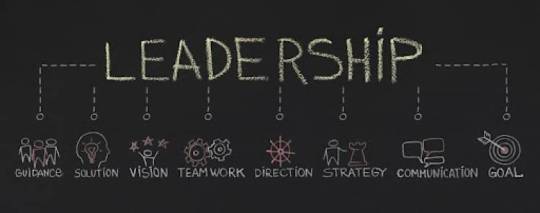#LearningEveryday
Explore tagged Tumblr posts
Text

India has the highest literacy rate in the world, with over 77% of its population able to read and write. This shows India's dedication to education and serves as a powerful reminder for the importance of literacy in today's world. At National Public School we provide a high-quality education that is tailored to each student's specific needs. We provide a stimulating learning environment in which students are encouraged to be engaged and think critically. Our teachers are committed to assisting students in reaching their full potential and to fostering a collaborative learning environment. We believe in giving our students the tools and resources they need to succeed academically and personally
visit us at
www.npskudlu.com
#learning#learningisfun#learningeveryday#earlylearning#environmentallearningforkids#children#child#childrenbooks#rates#literature#classicliterature#literacy#literacymatters#learningenvironment#environmentallearning#childrens#childrensliterature#literacyrate#rate#environment#highest#environmental#india#teacher#india_everyday#knowledgeispower#books#readingbooks#npskudlu#nationapublicschool
3 notes
·
View notes
Text
#StudyMotivation#AcademicLife#StudentGoals#StudyTips#LearningEveryday#StudyInspo#StudySession#EduLife#SmartStudy#ExamPrep#StudyHacks#BrainGains#StudentSuccess#KnowledgeIsPower#StudyCommunity#LearnWithMe#StudyAesthetic#AcademicInspiration#StudyDiary#EducationMatters
0 notes
Text

Done re-watching James-Lange theory of emotions for my quiz tomorrow. Thank God for Youtube! I was able to comprehend our lessons better. Apparently, learning never takes a vacation. 🤓
0 notes
Text
🎒📚 Happy National School Backpack Awareness Day! 📚🎒
Today, let's take a moment to appreciate the humble backpack - that faithful companion that carries the weight of our education and adventures! 🌟 Share your favorite backpack memories, your school year goals, or your tips for backpack safety! 🗣️

#BackpackAwarenessDay#CarryYourDreams#SchoolLife#EducationJourney#BackpackLove#AdventureAwaits#StudentLife#StaySafeCarryRight#BackpackGoals#LearningEveryDay#HaulingHope#BackToSchoolVibes#followme#blossomlifestylehub
1 note
·
View note
Text
𝐓𝐨 𝐬𝐮𝐜𝐜𝐞𝐞𝐝 𝐢𝐧 𝐦𝐨𝐝𝐞𝐫𝐧 𝐭𝐢𝐦𝐞𝐬, 𝐲𝐨𝐮 𝐧𝐞𝐞𝐝 𝐭𝐨 𝐤𝐞𝐞𝐩 𝐥𝐞𝐚𝐫𝐧𝐢𝐧𝐠 𝐧𝐞𝐰 𝐬𝐤𝐢𝐥𝐥𝐬 𝐭𝐨 𝐬𝐭𝐚𝐲 𝐚𝐡𝐞𝐚𝐝.
𝐉𝐨𝐢𝐧 𝐮𝐬 𝐭𝐨 𝐥𝐞𝐚𝐫𝐧 𝐬𝐨𝐦𝐞𝐭𝐡𝐢𝐧𝐠 𝐧𝐞𝐰 𝐞𝐯𝐞𝐫𝐲𝐝𝐚𝐲.

#learnsomethingnew#learn#education#learningisfun#learningeveryday#motivation#knowledgeispower#learnsomethingneweveryday#onlinelearning#languagelearning#knowledge#growth#inspire#growthmindset#educational#educateyourself#trainingprograms#website#development#skillboatlearning
0 notes
Text

The best way to learn is by doing. Enroll in our iOS combo course (Web Development + Server Security) and secure a well-paid job in the IT industry.
#ios#webdevelopment#course#learningeveryday#webdesignanddevelopment#learnnewskills#atees#study#DiplomaCourses#courses2023#uidesign#uxdesign#future#careers#iosdeveloper
0 notes
Text
𝗕𝗲𝘀𝘁 𝗝𝗮𝘃𝗮𝗦𝗰𝗿𝗶𝗽𝘁 𝗙𝗿𝗮𝗺𝗲𝘄𝗼𝗿𝗸𝘀 𝗳𝗼𝗿 𝗕𝗮𝗰𝗸-𝗘𝗻𝗱 𝗗𝗲𝘃𝗲𝗹𝗼𝗽𝗺𝗲𝗻𝘁 𝗶𝗻 𝟮𝟬𝟮𝟯
JavaScript has emerged as a powerful language not only for front-end but also for back-end development. With the rising demand for robust and scalable applications, JavaScript frameworks have become essential tools for developers. Here, we will explore the leading JavaScript Frameworks for back-end development in 2023.
#java#javascript#backenddevelopment#javascriptdeveloper#javascripttutorial#javascriptprogramming#javascriptlover#technology#websitedevelopment#javascripttips#websitedevelopmenttips#javaforbeginners#techblog#techblogger#learning#learningeveryday#learnsomethingnew#latesttechnews#DigitalYogi
0 notes
Photo

Inspired from #mugshotmondayart reference from some weeks ago * #learningeveryday #artistofinstagram #arteveryday #acrylicpen #sketchaday #sketchbookpractice #everydaysketchbook #patternaday #floralpattern #surfacepattern #floralsurfacepattern #createeveryday https://www.instagram.com/p/CpyAQzgLEO-/?igshid=NGJjMDIxMWI=
#mugshotmondayart#learningeveryday#artistofinstagram#arteveryday#acrylicpen#sketchaday#sketchbookpractice#everydaysketchbook#patternaday#floralpattern#surfacepattern#floralsurfacepattern#createeveryday
0 notes
Text

#newbeginnings#startofsomethingnew#todayisthedaytostart#howdowebegin#startofsomethinggood#nowornever#learningeveryday#starttoday#newbeginning#newbeginnings❤️#newbeginnings2022#startnow#startnow‼️#StartNowNotLater#startnownottomorrow#love#mindsetmatters
0 notes
Text
10 Commandments of Leadership
This article adds to the original brief of 10 Commandments of Leadership”, Stainton (2015) with the view of providing insights to potential leaders on what to focus on, why to focus on certain aspects, and how to bring out the best in the team.

1. Define the Destination- ‘The Goal’
Leaders should clearly define, communicate and remain consistent with the vision so that all stakeholders and the entire organisation remains aligned and move as a single unit towards that goal or vision.
2. Develop People
Focuses on how leaders can develop impactful teams who align the needs of the team members with the needs of the organisation.
3. Be ‘Accountable’
Expects a leader to be accountable for their own as well as the team's actions.
4. ‘Attribute all Successes to the Team’
Expects the leader never robs the team of the credit and stand behind them at times of their experiments going through tough times
5. “You shall give immediate, specific praise”
The leader should design and implement the rewards and recognition program that supports immediate and specific praise to motivate, boost morale and give a sense of achievement.
6. You shall not insist on being the smartest person in the room
Encourages the leaders to be inclusive in utilization of talents and skills necessary to achieve targets.
7. You shall Listen
Shows how a leader can be a better listener. Listening helps the leader be more compassionate and team members feel heard and appreciated. Once you listen with greater focus half the problem is solved.
8. The “What” and “How” of the goals
Requires a leader to empower the team to make decisions by creating a supportive climate where they can succeed.
9. Don't criticize or berate in Public
Encourages the leader to create a conducive environment for evaluating failures without demoralizing the team.
10. Continue to Learn and Grow
Expects leaders to be lifelong learners so that they remain relevant at the top. Leadership and Learning are indispensable to each other
Leadership is multifaceted and it takes time, experience and effort to become a successful leader.
Are leaders born? Absolutely…All leaders are born but they become great leaders with the ability to influence by investing the time and effort into the process and gradually becoming great. According to John Maxwell, Leadership is all about Influence-nothing more, nothing less but it is complicated as it is multi-faceted. It encompasses
Vision
Momentum
Time
Respect
Experience
Emotional support
People skill
Discipline
Many of these factors are intangible and for this reason it takes time and experience to become a great leader. In the article, 10 Commandments of Leadership”, Stainton (2015) shares the ten qualities that a good leader should possess. This article adds to the original brief and the views of providing insights through leaders from four different domains (Leadership, Finance & Operations, Sales Management and Business Transformation) based on their practical experiences. This is aimed to help potential leaders on what to focus on, why to focus on certain aspects, and how to bring out the best in the team.
10 Commandments of Leadership
1. Define the Destination-‘The Goal’
A leader with a well-articulated Vision is able to define the ��goal”-the destination. Goals give a clear sense of direction to people who are part of the journey because “the great thing in this world is not so much where we stand, as in what direction we are moving” (Holmes, n.d).
Leaders can align the Goal and the team use the 3C Principle:-
Clarity
The outcome- What needs to be achieved?
The benefit of achieving the outcome?
Conviction
Believe in the goals
Display drive and passion in achieving the goal
Communication
Clearly communicate the goal to all stakeholders
Consistently reinforce the message to remove ambiguity
Create a “psychological safety” zone for the team to express their ideas/fears/opinions so that obstacles in the path to the goal can be removed (Edmondson, 2018).
Once the goal is set and communicated, leaders need to display a consistent behavioural model towards that strategic vision/goal. This reinforces the message and drives the team to understand the importance of these goals to the organisation. For example, leaders may design their organisational goals along the lines of global growth metrics, improving operating margins, reducing attrition rate, innovation, improving supply chains just to name a few.
So commandment 1 requires the leader to clearly define, communicate and remain consistent with the vision so that all stakeholders and the entire organisation remains aligned and move as a single unit towards that goal or vision.
2. Develop People
According to Jack Welch “Before you are a leader, success is all about growing yourself. When you become a leader, success is all about growing others.” Leaders must constantly work towards helping team members to identify and maximize their potential. This can be done by creating easy access to necessary tools and guidance so that the team members are in a conducive environment to succeed.
A good leader motivates the team members by focusing on their strengths, recognizing their past successes, instils confidence when they fail and helps them to visualise their future success. In this respect, Maxwell (2015) says that “Every person has seeds of greatness within… but when you believe in them, you water the seeds and give them a chance to grow” (p. 250).
Additionally, a leader takes every opportunity to show the team members how they contribute in the overall growth of the organisation. When team members can visualise their growth aligning with the organisation's growth they remain motivated.
Good leaders invest time in the orientation process so that new team members are aware of the history of the organisation, the work culture, products and services among other things. Furthermore, they jointly assess the growth and career paths, jointly agree on continuous professional development and training needs. Additionally, leaders improve their team members performance by investing in timely honest constructive feedback. At the same time they do not hold back on appreciating the good work to boost the morale of the team because appreciation gives people reason to keep going further.
So, commandment 2 focuses on how leaders can develop impactful teams who align the needs of the team members with the needs of the organisation.
3. Be ‘Accountable’
Accountability means responsible behaviour and ownership. Accountable leaders take responsibility for the professional growth and success of the team they lead. Such leaders have a clear vision, standards to measure success and an understanding of the obstacles that may hinder the success of the team (Cantero-Gomez, 2019). Accountable leaders take responsibility for the actions of both, self as well as the team by showing the following characteristics.
Take full responsibility for the decisions made
An accountable leader regularly reviews the decisions impacting the success. In the event of a failure, they do not look for a scapegoat to blame instead they stand with the team, apologise and take the blame on themselves. This demonstrates to the team that they can trust their leader even in their lows which further garners team support and willingness to take corrective measures in order to take the team to the next level.
Take responsibility for communication
Accountable leaders take it upon themselves to communicate to the teams their vision, strategy and implementations. However, when breakdown occurs, they analyse to get to the root cause of the issue, they blame the miscommunication on themselves and take corrective measures so that the same issues do not recur.
Transform problems into learning lessons
Accountable leaders encourage their team members to evaluate and learn from their failures.
So commandment 3 expects a leader to be accountable for their own as well as the team's actions.
4. ‘Attribute all Successes to the Team’
Strong workplace relationship is key to the growth of any organization. Leaders can create a strong workplace relationship between team members by creating a collective identity, by manner of inclusion. One sure shot of creating inclusion and collective identity is by sharing all credits with the team even when it might largely be an individual contribution. For example, in an attempt to turn a failed project over, the leader might need to change the processes, improve documentation, restructure teams or implement better coordination between teams. All these were individual contributions by the leader to save the project. However, if the project succeeds, the leader can boost the morale of the team by attributing all success to the team in the following ways:
a) Appreciating each team member individually, and letting everybody in the organization know
b) Acknowledging and sharing how the team member contributed to the success of the project
c) Review the good practices adopted by the team
d) Reward the team
So commandement 4 expects the leader to take the blame but never rob the team of the credit.
5. “You shall give immediate, specific praise”
Spiritual Leader Mahatria says “While you feel that it is your right to point out the mistake, similarly you are obligated to appreciate every time you observe a good work as well.” Hence, Leaders should look for that specific good work done by the team member and appreciate it quickly.
Acknowledging and celebrating team members success and good work makes people feel valued and motivates them to work hard. Rewarding an employee for their good work does not always have to be monetary. Simple handwritten appreciation notes, verbal appreciation in front of the team or leadership team, email can do wonders. Recognition can start during daily team huddle meetings without waiting for marked monthly, quarterly and annual reviews to acknowledge good work. “On the Spot” recognition in front of peers can immediately enhance the motivation levels of team members.
Generally motivated people show willingness to take responsibility. This helps them to professionally grow and helps the organization to grow the team with internal resources. One of the key roles of the leader is to keep the morale of the team high as it brings greater team synergy and team dynamics. It creates a high performing team which looks at “We” rather than “Me”.
So commandment 5 expects the leader to design and implement the rewards and recognition program that supports immediate and specific praise to motivate, boost morale and give a sense of achievement.
6. You shall not insist on being the smartest person in the room
As a leader, being vulnerable and being able to admit in front of the team that you may not have all the answers is more critical than showing off that you know it all. Vulnerable leaders who are open to ideas and suggestions are considered more approachable and authentic by their teams. Whereas, leaders who are unwilling to listen and accept others’ expertise, knowledge and ideas and shut off criticism are more likely to fail.
A team where the leader creates a conducive environment to pool all resources in terms of different talents, skills, voices tends to be more successful. With technological advancements and unprecedented levels of change, leaders need to drive innovation and growth. For this, it becomes imperative to hire talented people who ace in their niche, whereby leaders surround themselves with smarter people in the room who may have answers to questions which they may not have. This is the key difference between a successful and unsuccessful leader who has the wisdom to team up with people and resources which ultimately align to the growth of the organisation.
Furthermore, Leaders who delegate tasks create opportunities of growth for their employees. Whereas, leaders who micromanage, are not only considered control-freaks but also stress-triggers for the team. This could result in people feeling unappreciated resulting in talented brain-drain from the organisation because of the leader who knows it all.
The 6 commandment of leadership encourages the leaders to be inclusive in utilization of talents and skills necessary to achieve targets.
7. You shall Listen
Leaders who embrace the art of listening are considered as compassionate leaders (Llopis, 2013). Although, listening is not part of any job description of a leader, it gives the leader the edge to lead the team.
What is listening? Is it only giving undivided attention to a person or a team? No, listening is more than that. It includes
· Understanding verbal cues
· Recognizing non-verbal cues such as body language, facial expressions, mood, voice, behaviour patterns and more.
A leader who wants to engage with their team, understand their performance slumps needs to be ready to commit time to listen. Hence, Leaders who develop the habit of listening are able to-
-Build stronger, deeper relationships with their team members
-Open lines of communication by showing respect and interest in the team member
-Increase their own knowledge
-Generate new ideas
-Build loyalty (Maxwell, 2015)
Furthermore, a leader seeking real answers should go into a meeting with lots of questions giving the opportunity to hear others rather than their own voice. At the same time, leaders should engage in meaningful conversations free of distractions in order to avoid sending the wrong message that the speaker and their message is unimportant. So workplace best practices could include attending meetings gadget-free to improve two-way communication, high productivity and time-efficiency.
So commandment 7 shows how a leader can be a better listener. Listening helps the leader be more compassionate and team members feel heard and appreciated. Once you listen with greater focus half the problem is solved.
8. The “What” and “How” of the goals
Leaders define the vision/goal to be achieved and communicate it clearly to the team. Leaders who involve team members in the decision-making process are considered more democratic leaders, who foster qualities of trust and ownership in their teams.
According to a study conducted by Dr. Natalia Lorinkova at Wayne State University, teams led by directive leaders may initially do well under the direct control and command of the leader. However, it was observed that over a period of time, teams led by empowered leaders outperformed those led by directive leaders. Empowered teams showed high levels of team learning, coordination, empowerment and mental model development.
Empowering people lies in the concept of creating “psychological safety” in the workplace in order to foster learning, innovation and growth (Edmondson, 2018). “Psychological safety” is defined “as a climate in which people are comfortable expressing and being themselves’ (Edmondson, 2018, xvi). So teams led by empowered leaders feel empowered in the ‘psychological safety’ net to add value to the team in achieving the goal set by the leader. Such team members do not fear sharing ideas as they are not hindered by interpersonal fears. Hence, by removing the command and control, the leader encourages ideas and solutions from even the silent quarters of the team resulting in improved performance of teams.
Commandment 8 requires the leader to empower the team to make decisions by creating a supportive climate where they can succeed.
9. Don't criticize or berate in Public
Every day, a Leader is faced with trying situations where tough decisions on non-performance, delays, failures etc lead to disagreements. Having a difference of opinion is perfectly fine as it shows the passion, involvement and belief among the team to succeed. However, when leaders do not create a conducive ‘psychologically safe’ environment where conflict and disagreement happen, then it can create stress, anxiety and team morale dissipating.
Real learning happens when the individuals or teams make mistakes. So it becomes imperative not to miss the opportunity to learn from the mistakes. However, evaluation done in a safe climate ensures team members reflect on their same mistakes in a non-confrontational environment.
This can be done through 1:1 discussions behind closed doors. A good leader knows how to separate the person from the performance. This encourages the team members to be more receptive to accepting their mistakes, failures and expressing their learnings from the experience without feeling humiliated, embarrassed and cornered.
So commandment 9 encourages the leader to create a conducive environment for evaluating failures without demoralizing the team.
10. Continue to Learn and Grow
Successful leaders are lifelong learners (Maxwell, 2015). Being successful does not mean reaching the top, real success is sustaining it there. Leaders understand the prerequisites of running an organisation and making key strategic and financial decisions. But successful leaders understand that change is constant and being able to adapt is key to success. So leaders who respond using multiple types of intelligences such as IQ, EQ depending on the circumstance remain relevant.
Successful leaders learn for the sake of learning on a daily basis in conventional or unconventional ways by matching their personal learning styles and appetite. They learn by reading, attending conferences, courses, seminars to acquire new knowledge, strategies and skills. But practical learning happens when leaders engage in transformational conversation with people who have dealt with similar problems in the real world. With the new knowledge, they resolve problems in their own organisations. In addition, they unlearn things which are no longer relevant in serving them.
So commandment 10 expects leaders to be lifelong learners so that they remain relevant at the top. Leadership and Learning are indispensable to each other (John F Kennedy).
In conclusion, Leadership is multifaceted and it takes time, experience and effort to become a successful leader. Leadership is all about influence. So leaders need to define their goals clearly to align their teams, invest time and effort into the development of their followers because only when people feel they are valued will they follow you as it always comes back to the question “what is in for me?”. Leaders need to be accountable for themselves and the people they lead, be ready to credit success to the team while taking upon oneself all the blame. They also understand the value of diverse talented people on their teams by listening to their ideas and solutions which would give way to innovation and growth. Additionally, leaders should encourage empowering their teams by creating “psychological safety” at the workplace so that growth takes place even in crisis. So leadership is a journey of personal growth while empowering others to grow with you.
#leadershipkard#onlinelearning#teamwork#leadership#traininganddevelopment#leadershipdevelopment#teamwins#organisationaldevelopment#personaldevelopment#business#growthmindset#virtuallearning#onlinecourses#entrepreneur#learningeveryday#executives#managers#corporate#india#bangalore#bengaluru
0 notes
Text
Leadership Qualities to Excel

ABILITY TO LEAD SELF
Leadership is all about leading a team of people who can meet organization goals and assist in growing, not only the organization, but themselves as well. Budding leaders, aspiring to reach leadership heights, therefore, should first be successful in leading themselves. This can be done through a 3-step process:
Self- Awareness
Exercising Self- Control
Continuous Self- Improvement
Self-Awareness
This step includes a process of carrying out weekly self-retrospective on self-performance (what went well and what did not), continuous self-assessment and visualization as to how to enhance/maximize the potential and seeking feedback from boss, teammates, family members and close friends.
Exercising Self-Control
All human beings have their own limiting behaviors which includes reacting to situations, short tempers, biases etc. Building strong relationships and handling situations in a mature manner is key for the growth of all, especially for the budding leaders.
Budding leaders should become very conscious about their thoughts, feelings and emotions. The weekly self-retrospectives and seeking feedback from boss, team mates, family members and close friends will also help in a big way to identify such behaviors.
Budding leaders should be able identify such reactive behaviors soon as the same happens and take corrective actions immediately. Some of the common ways to do so are taking a pause, having a glass of water, and temporarily stepping away from the situation.
Regular exercises and meditation should help to bring more calmness of mind as well as awareness in the long run.
Continuous Self-Improvement
Self-improvement is a continuous process for all, especially so for the budding leaders. This is a very important tool for the growth of people and the organization. Budding leaders should be constantly adopting self-improvement techniques to enrich their knowledge, especially in the areas that are identified during the self-awareness process as areas that need improvement.
Budding leaders should do the following to keep self-improving:
Attend trainings/seminars (relating to technical area of expertise, self-improvement as a person, mindset, leadership, public speaking etc.),
Reading books/articles
Exchange thoughts/ideas with industry peers using social media
Get mentorship
The knowledge gathered should be shared and implemented.
Work Ethics
Budding leaders should exhibit strong work ethics at all times. Only then, can they lead by example in the future. Work ethics include integrity, respect, punctuality, and discipline. Adherence to company rules and regulations is also very important. Leadership and Management Training
PERFORMANCE EXCELLENCE
Leadership Training Programs is about building a high performing team who can meet the performance goals of the organization. For budding leaders to become such leaders, they should maximize their own performance to start with.
This process starts with knowing about the organization. Seek information about the organization:
Nature of activities (Product or services provided; customers and geography)
Organization vision and values
Organization chart
Key policies (Employee handbook, etc.)
Benefits (Health, welfare etc.)
Awards and Recognition System
Seeking and receiving feedback system
Performance appraisal system
Scope for learning and development
The next step is to do proper expectation setting about the role:
Details of the role
How does the role align with the company goals?
Key Performance Areas
Criteria on which performance will be evaluated
Boss’s expectations
Armed with the proper role expectation, budding leaders should keep continuously scaling new heights of performance, keeping the following key aspects in mind:
Be result oriented. Always work with goals & targets
Quality of work is uncompromising
1 note
·
View note
Text
VIDEO DATASET MACHINE LEARNING:-
Learning-based visual data compression and analysis have attracted great interest from both academia and industry recently.
Visit: https://gts.ai/
#videos#learning#machinelearning#instavideo#learningthroughplay#trendingreelsvideo#machinery#machines#videostory#videoislam#videoquotes#learningeveryday#learningbydoing#stilllearning#funlearning#newmusicvideo#videogamememes#processvideo#videocalls#videoresep#remotelearning#machinelearningalgorithms#learningforlife#video_kaif#machineacoudre#videosurveillance#videosdroles#learningtime#machineweft
0 notes
Text
Edukacja to proces, który nigdy się nie kończy
Edukacja to proces, który nigdy się nie kończyA my jeśli chcemy się uczyć mamy do tego prawo, bez względu na wiek, wykształcenie, pochodzenie.Miejsce na ziemi.Musimy tylko sobie na to pozwolić.Gdyż czasami sami się ograniczamy.Otoczenie czasami też nie daje nam wystarczająco dużej motywacji. Motywujemy się sami 💓. AspieZaklinaczkaSylwia N.Baginska Sylwia N. Bagińska | Miki…

View On WordPress
0 notes
Text
Leadership Qualities to Excel

ABILITY TO LEAD SELF
Leadership is all about leading a team of people who can meet organization goals and assist in growing, not only the organization, but themselves as well. Budding leaders, aspiring to reach leadership heights, therefore, should first be successful in leading themselves. This can be done through a 3-step process:
Self- Awareness
Exercising Self- Control
Continuous Self- Improvement
Self-Awareness
This step includes a process of carrying out weekly self-retrospective on self-performance (what went well and what did not), continuous self-assessment and visualization as to how to enhance/maximize the potential and seeking feedback from boss, teammates, family members and close friends.
Exercising Self-Control
All human beings have their own limiting behaviors which includes reacting to situations, short tempers, biases etc. Building strong relationships and handling situations in a mature manner is key for the growth of all, especially for the budding leaders.
Budding leaders should become very conscious about their thoughts, feelings and emotions. The weekly self-retrospectives and seeking feedback from boss, team mates, family members and close friends will also help in a big way to identify such behaviors.
Budding leaders should be able identify such reactive behaviors soon as the same happens and take corrective actions immediately. Some of the common ways to do so are taking a pause, having a glass of water, and temporarily stepping away from the situation.
Regular exercises and meditation should help to bring more calmness of mind as well as awareness in the long run.
Continuous Self-Improvement
Self-improvement is a continuous process for all, especially so for the budding leaders. This is a very important tool for the growth of people and the organization. Budding leaders should be constantly adopting self-improvement techniques to enrich their knowledge, especially in the areas that are identified during the self-awareness process as areas that need improvement.
0 notes
Text


"A Trader's Diary - The Beginning"
Date: 14th December 2024
#TraderDiary MyTradingJourney EquityTrading StockMarket PreMarketUpdates ProfitAndLoss TradingBeginnings LearningEveryDay YoungTrade#Spotify
2 notes
·
View notes
Text

#bestconventinnagpur#bestschoolinnagpur#amitgroupofschools#amitschools#bestconventschoolnearme#conventschooldighori#conventschooldighorinagpur#conventschoolnagpur#nagpur#education#.#hashtag#bestschool hashtag#nagpur hashtag#amitconventschool hashtag#bestschoolinnagpur hashtag#EducationIsKey hashtag#LearningEveryDay hashtag#QuoteOfTheDay hashtag#EducationalInspiration hashtag#KnowledgeIsPower hashtag#TeachAndLearn hashtag#GrowThroughLearning hashtag#InspiringMinds hashtag#EducationMatters hashtag#LifeLongLearning hashtag#StudyQuotes hashtag#MindsetMatters hashtag#FutureOfEducation#LearnToGrow hashtag
1 note
·
View note